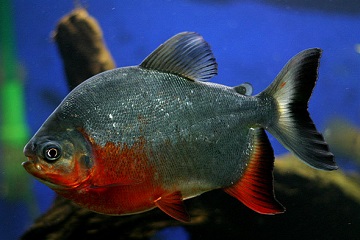This is the Method of IPB Researchers to Improve the Growth of Freshwater Pomfret Fish

Fish is a major source of food for mankind, providing with a significant amount of the animal protein diet, excellent dietary sources of highly unsaturated fatty acid (HUFA) and polyunsaturated fatty acid (PUFA), especially the omega-3 fatty acids, eicosapentaenoic acid (EPA) and docosahexaenoic acid (DHA). Today, there is increasing interest in fish consumption because of their high PUFA content. The flesh of the pomfret (Colossoma macropomum) is popular and fetches top prices in fish markets in its native range. It is marketed fresh and frozen. Demand for freshwater pomfret is increasing, encouraging cultivators to increase their production. However, wild populations of the pomfret have declined because of overfishing and many currently caught fish are juveniles. The acceleration of the production can increase the total production of cultivation, and the energy of osmotic work optimization can be allocated for growth. Therefore, the study to select a suitable diet for culture of juvenile pomfret was really needed.
Accordingly, five researchers of the Department of Aquaculture, of the Faculty of Fisheries and Marine Sciences of Bogor Agricultural University (FPIK IPB), namely Yuni Puji Hastuti, Chandra Yudistira, Kukuh Nirmala, Wildan Nurusallam and Kurnia Faturochman implemented the research program to analyse the effect of calcium carbonate (CaCO3) on media salinity (salt content) to the growth of freshwater pomfret seedlings.
The pomfret seedlings used in this study had an average length of 1.93 centimeters with a mean weight of 0.26 grams. Pomfret seedlings were in kept 15 units of 30 × 15 × 25 centimerter aquarium.. They were reared in the 3 ppt of water salinity, they were filled with as much as 9 liters of water, with additional of lime CaCO3 according to treatment. Each aquarium was filled with 4 fishes L-1 or 36 fishes per aquarium.
In this experiment the researcher gave five different CaCO3 treatments to the test fish. The dose of each treatment consisted of controls (0 milligrams per liter of CaCO3), A (50 milligrams per liter of CaCO3), B (100 milligrams per liter of CaCO3), C (150 milligrams per liter of CaCO3), and D (200 milligrams per liter of CaCO3) . The study was conducted for 30 days of maintenance, and pomfret fish seedlings were fed with silk worm feed in ad libitum or given three times a day.
Based on the results of these studies, the researchers found that the survival rate, daily growth rate, and absolute length in treatment with addition of CaCO3 lime were higher than control treatment (0 milligrams per liter of CaCO3). The survival of CaCO3 treated pomfret fish seedlings ranged between 75 percent and 85 percent, while the survival of control fish was 70.73 percent. The daily average growth rate was of pomfret fish seedlings treated CaCO3 was also higher than that of control treatment. The growth rate of pomfret fish seedlings treated with CaCO3 was 8.5±9.7 %, while the control was 7.68 percent per day.
"On the absolute long-term growth of freshwater pomfret fish for each treatment also has a difference. The highest absolute length was obtained by D treatment (200 milligrams per liter of CaCO3) with a value of 2.64 centimeters, while the lowest absolute length was obtained by the control treatment (0 milligrams per liter of CaCO3) with a value of 1.87 cm, "said Yuni.
The results showed that the survival rate, growth rate and body length of freshwater pomfret seedlings kept in the combination of 3 ppt salinity media and additional calcium carbonate (CaCO3) L-1 higher than control treatment, it was the best rearing media to increase the growth of pomfret seedlings, that the parameters of daily average growth rate was not significantly different. Thus, highest survival rate was achieved by the addition of CaCO3 50 milligrams per liter of water. (Wied)



